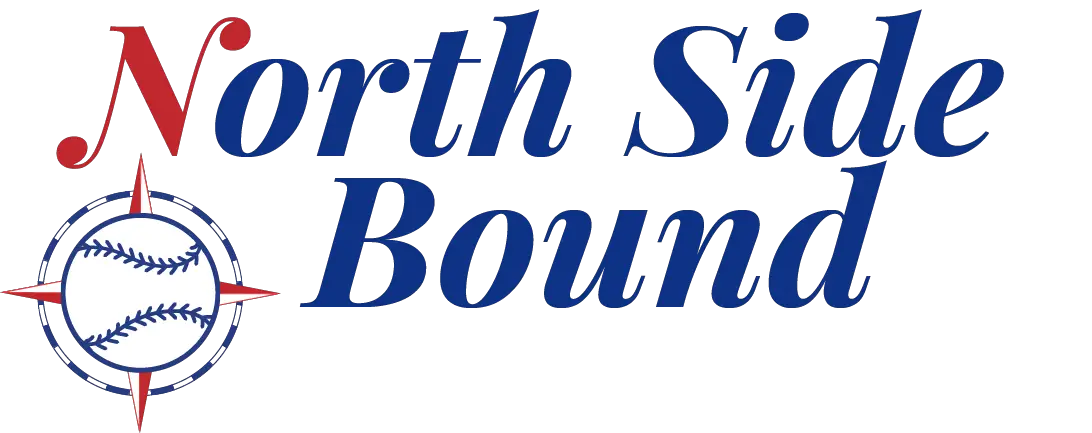In the sAtpif starting 2022 on a strong note, the writers at North Side Bound got together to create our Chicago Cubs New Year’s Resolutions. We’re keeping these related to the minor leagues, draft, scouting, or player development arenas.
North Side Bound strives to be your one-stop shop for all things Cubs and MLB draft content and with that in mind, we offer comprehensive statistics on all minor league players in the organization. These are continually updated throughout the season. Make sure to peruse the latest stats on all your favorite players, or even find the next under-the-radar stud.
We got together the entire NSB crew to discuss their favorite pitching statistics and share players performing in that category (spoiler alert, there are some serious Bryan Hudson fans in the audience).
Greg Zumach: These pitching stats have been a delight to dive into so major kudos to Greg Huss for all his work in managing them. I’m a big fan of K%-BB%. It’s a much more projectable version of the original K/BB since the ratio can be skewed pretty easily. As the stat name implies, K%-BB% takes into account strikeout and walk rates so can provide insight into a pitcher’s stuff and control. And if we’re talking K%-BB%, then you have to reference Sheldon Reed’s mind-blowing 50%. It’s a ridiculous number that no one else in the system approaches. Brandon Hughes‘ 35.1% is still sparkling and slides in for second in the organization. For some MLB reference, Ryan Halsey’s 47.9% leads MLB, but most elite contributors still sit around the 30-35% mark. Watch out for Reed, especially after he’s already made the promotion to South Bend.
Greg Huss: I’m going to cheat a little bit and mention two different stats here today but I’m doing that because I want to point out a stat that we are more used to seeing in baseball day-in and day-out and one that is a little more of an advanced metric. Those stats are WHIP and CSW%.
We know that WHIP is Walks+Hits divided by Innings Pitched. I love that this stat really gives you a solid indication of what kind of traffic a pitcher is allowing on the basepaths in a given inning. There are always exceptions to numbers, but a higher WHIP often shows that a guy is playing with fire a bit and even if he isn’t allowing runs off those baserunners, a high WHIP isn’t sustainable long-term for a good pitcher.
CSW% is short for the amount of Called Strikes and Whiffs a pitcher gets per pitches thrown. Simply, of the total pitches thrown in a game, what percentage of them end with a guy swinging through it or watching it for a strike. It seems simple, but it is a really good way of highlighting who is doing a good job of confusing hitters at the plate. According to Pitcher List, a league-average starting pitcher will generate a CSW% of 28.7%. The best starting pitchers in the league sport a CSW% between 35-40%.
So what pitchers in the system are performing admirably in both my traditional and advanced stats this year? Look no further than reliever Bryan Hudson (5th in the system in WHIP [0.96], 1st in CSW% [35.2%] with a min. 15 IP) and starting pitcher DJ Herz (9th in WHIP [1.02], 5th in CSW% [32.9%]). I trust stats that show just how good Hudson and Herz are and you should, too.
Jimmy Nelligan: There are a couple of stats I gravitate toward when I’m evaluating a pithing. The first is the strikeout percentage (K%) followed closely by ground ball percentage (GB%). The way I look at pitching is simple: you want to minimize what the batter does in the box, and the two most ineffective things a batter can do is swing and miss or hit a ground ball. Rarely, a ground ball is going to be extra bases, and with runners on base it often leads to multiple outs. Plus, flyball pitchers typically struggle at Wrigley field.
Bryan Hudson is a guy that leads in both K% and GB% which is a big reason for his success. In the entire Cubs system Bryan Hudson is second in GB% and 13th in K% (minimum 10 IP pitched this year). If Hudson can continue to be a ground ball machine with his heavy sinker and continue to be toward the top of the system in strikeouts, he could be a call-up to Chicago by the end of the year.
Todd Johnson: While ERA Is the most common stat used to evaluate a pitcher’s effectiveness, I like to look at how many batters they strikeout per nine innings (K/9). It simply tells me if they are missing bats. Ideally, that is what you want. An organization wants to get guys that have “out” pitches at the MLB level.
In the past, we’ve seen some players who have high ERAs (4.50+) in class A along with a high K/9 rate work their way up the system because the pitching development staff could build an arsenal around someone with an out pitch. Both Adbert Alzolay and Justin Steele did not have good tenures at South Bend (which was then Low-A) but they missed bats, lots of them. Both blossomed at Myrtle Beach in 2017 and 2018.
We’ve seen Bryan Hudson really come on strong the last year as he has the propensity to miss bats after basically spending three seasons in Myrtle Beach trying to figure it out. Now, he’s a phone call away. While ERA is an outstanding stat, K/9 really tells you if a pitcher has the talent to get the job done.
Wrap-up
Did we mention your favorite pitching statistic? Who catches your eye in the pitching department? Look for next week’s Roundtable where the NSB writers debate hitting statistics.





